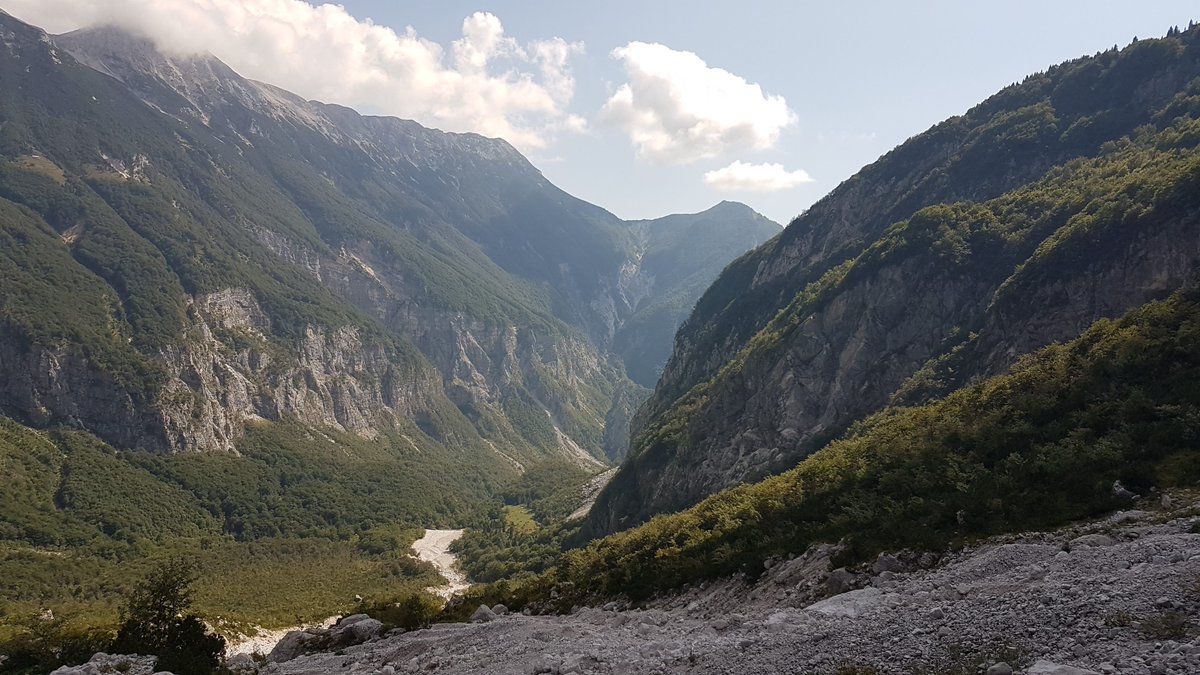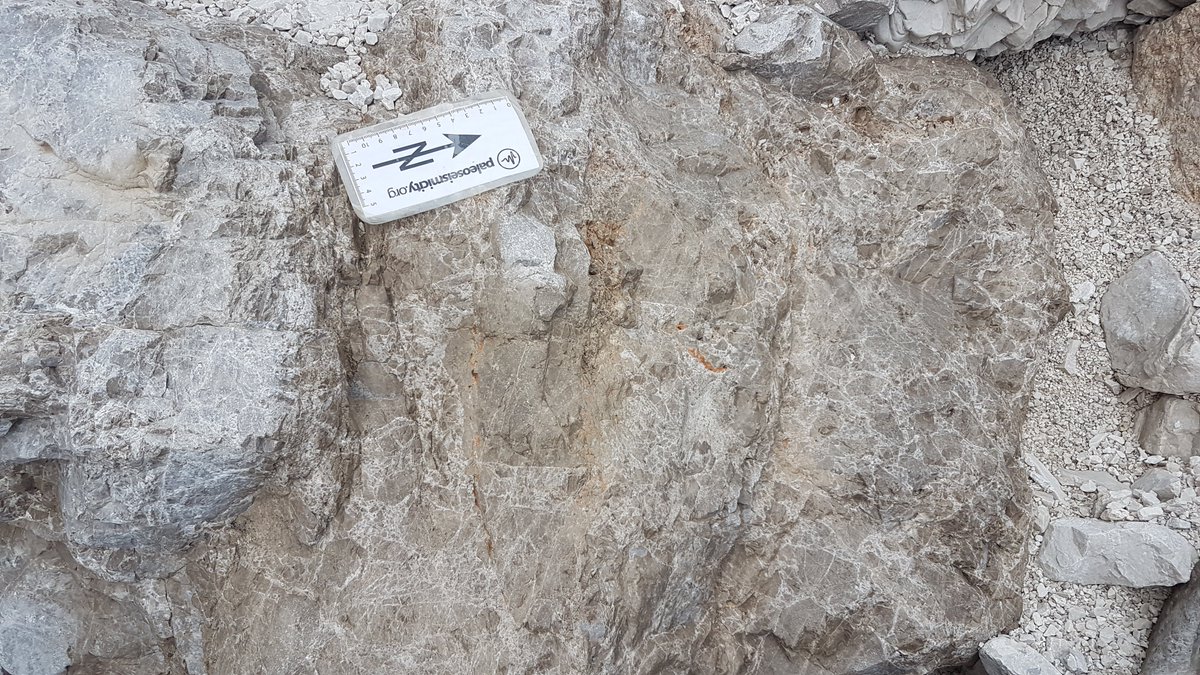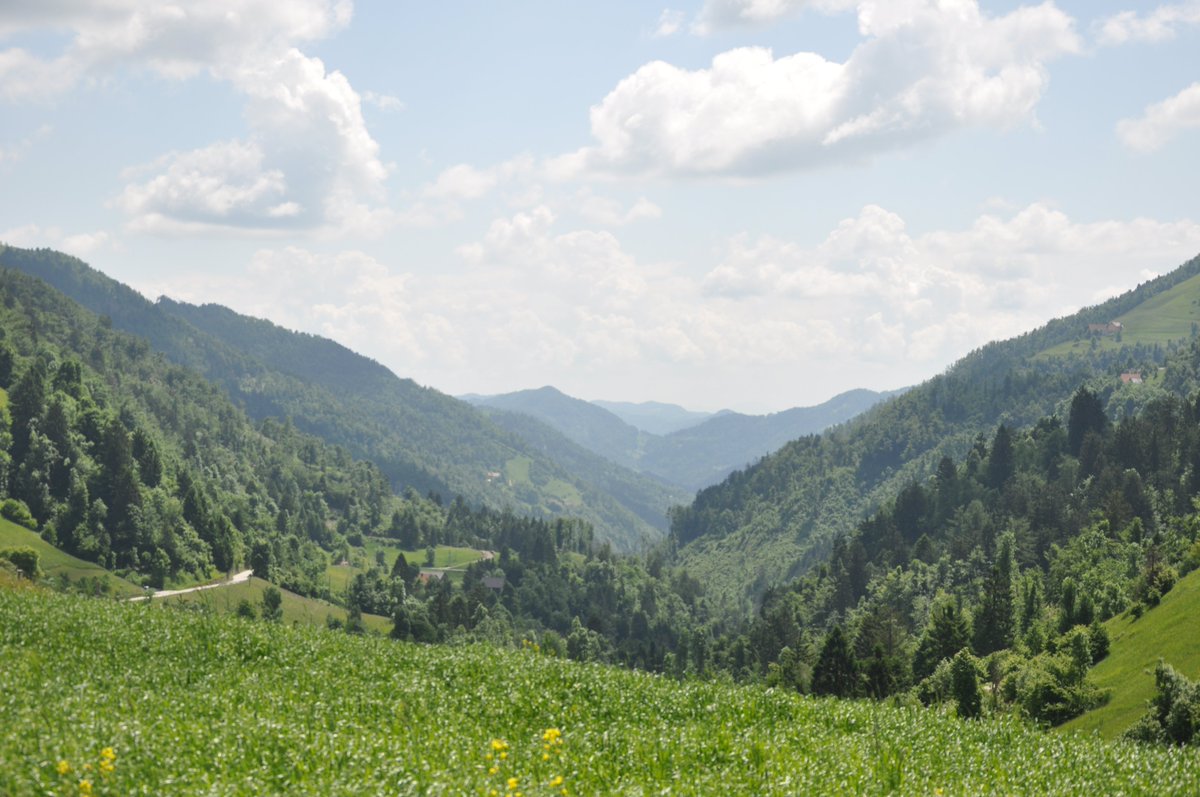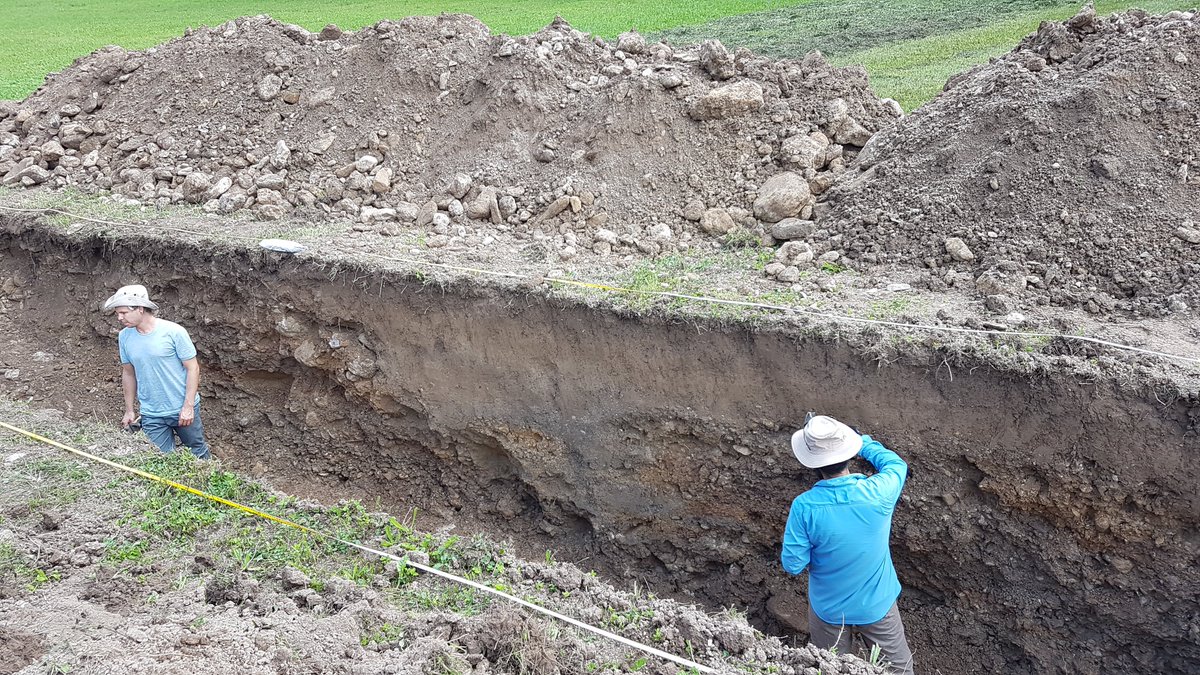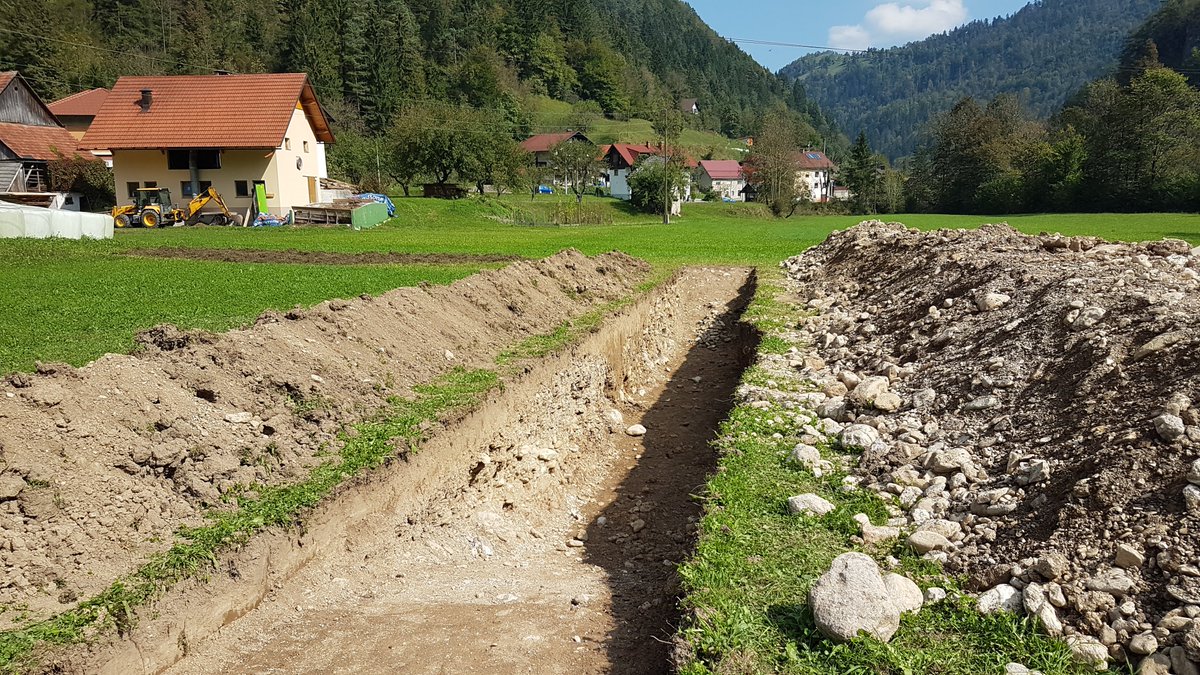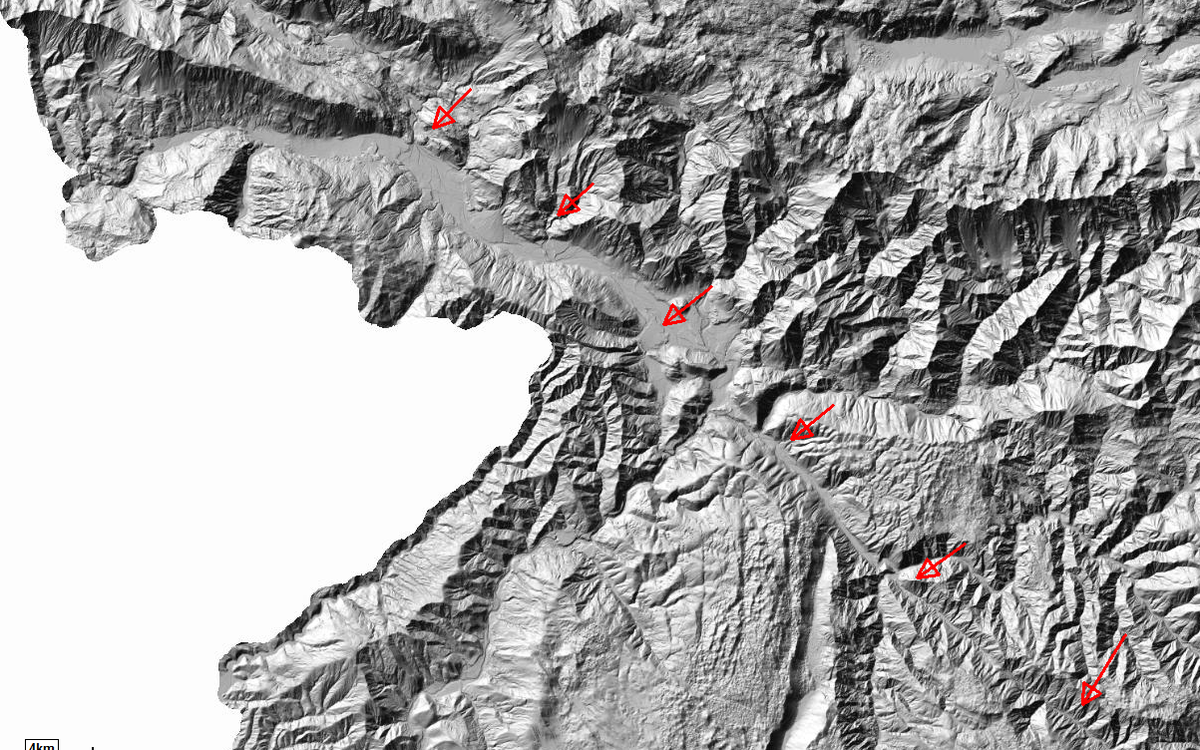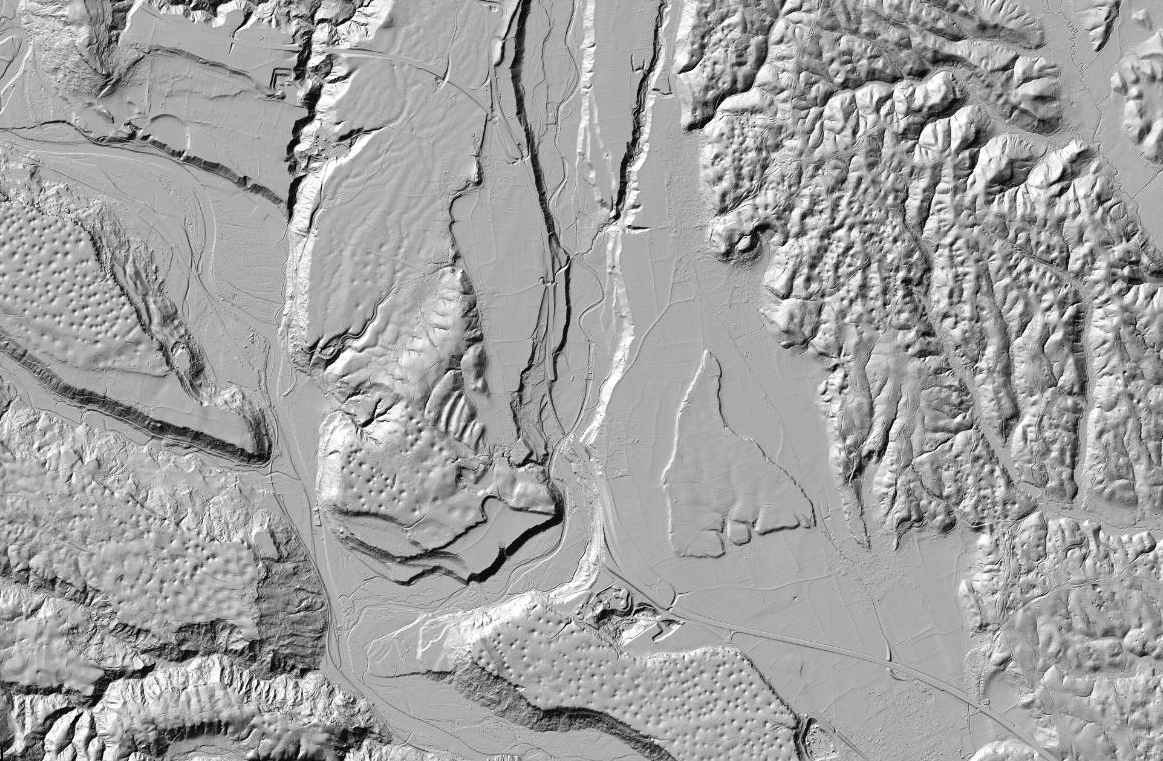A magnitude Mw3.8 #earthquake woke up residents in NW #Slovenia today. I& #39;ve done a lot of field work in the area for the #SPP2017 ( http://www.spp-mountainbuilding.de/ ),">https://www.spp-mountainbuilding.de/">... so here& #39;s why this event is interesting. A thread:
(figure from @LastQuake https://www.emsc-csem.org/Earthquake/earthquake.php?id=877440)">https://www.emsc-csem.org/Earthquak...
(figure from @LastQuake https://www.emsc-csem.org/Earthquake/earthquake.php?id=877440)">https://www.emsc-csem.org/Earthquak...
The quake occurred at the northern end of the #Idrija Fault or perhaps on the Ravne Fault. This is the transition zone between S-directed thrusting on E-W faults at the border of the Southern #Alps and right-lateral strike-slip on NW-SE faults in Slovenia.
The largest instrumental quakes on the Alpine thrusts happened in 1976 - the famous #Friuli earthquakes. See e.g. Aoudia et al. (2000). https://agupubs.onlinelibrary.wiley.com/doi/abs/10.1029/1999GL011071
or">https://agupubs.onlinelibrary.wiley.com/doi/abs/1... the Wiki page: https://en.wikipedia.org/wiki/1976_Friuli_earthquake">https://en.wikipedia.org/wiki/1976...
or">https://agupubs.onlinelibrary.wiley.com/doi/abs/1... the Wiki page: https://en.wikipedia.org/wiki/1976_Friuli_earthquake">https://en.wikipedia.org/wiki/1976...
But the strike-slip faults have also had a couple of strong quakes recently. Two shallow earthquakes of magnitude MS5.7 and MW5.2 occurred on the Ravne fault in 1998 and 2004, respectively (Bajc et al., 2001; Kastelic et al., 2004, 2008).
These quakes caused damage and also #earthquake environmental effects. See Gosar (2000): https://nhess.copernicus.org/articles/12/1659/2012/
https://nhess.copernicus.org/articles/... href="https://twtext.com//hashtag/ESI2007"> #ESI2007
The strongest historical event in W #Slovenia was the 1511 Idrija #earthquake. It devastated the mining town of Idrija in Slovenia, but also caused significant damage in NE Italy (see summary in Fitzko et al., 2005).
Constraints on the location and mechanism of the 1511 Western-Slovenia earthquake from active tectonics and modeling of macroseismic data https://www.sciencedirect.com/science/article/abs/pii/S0040195105002015">https://www.sciencedirect.com/science/a...
Fitzko et al. (2005) modelled the macroseismic data and found the best fit for a 50 km-long rupture of the Idrija Fault, corresponding to a M6.9 dextral strike-slip earthquake
This is supported by geophysical studies and a paleoseismic trench in the village of Srednja Kanomlja near Idrija (Bavec et al., 2012, 2013).
However, Falcucci et al. (2018) trenched the Colle Villano Thrust in NE Italy and found a post-15th century surface-rupturing earthquake, which they interpret as the 1511 event.
Thus, it is still not resolved whether the 1511 #Idrija #Earthquake was a single event or if two earthquakes ruptured two different faults in close succession.
In order to better understand what the fault is doing and when the last #earthquake happened, we trenched it in 2018 with @shakesomuch @JulianWelte @wahidgeologist
We found surface ruptures, aligned pebbles, and a fissure fill that affect ~2000 a old sediments. Thus, we think that an earthquake of at least M~6 happened.
(I am currently writing all this up for a paper to be submitted to a Special Issue in @EGU_SEarth https://se.copernicus.org/articles/special_issue1099.html)">https://se.copernicus.org/articles/...
This is the #Idrija fault as seen in the wonderful 1 m #LiDAR data that are available for entire Slovenia from @ARSO_potresi:
http://gis.arso.gov.si/evode/profile.aspx?id=atlas_voda_Lidar@Arso">https://gis.arso.gov.si/evode/pro...
http://gis.arso.gov.si/evode/profile.aspx?id=atlas_voda_Lidar@Arso">https://gis.arso.gov.si/evode/pro...
Anyway: What today& #39;s little earthquake is telling us is that the faults are alive and kicking, and that there is almost pure strike-slip motion on them. Adria is moving north with respect to Europe with only 2-3 mm/yr (D’Agostino et al., 2005, 2008)
Moulin et al. (2016) estimate slip rates for the Idrija and other, parallel faults of around 1-2 mm/yr only:
https://agupubs.onlinelibrary.wiley.com/doi/full/10.1002/2016TC004188
This">https://agupubs.onlinelibrary.wiley.com/doi/full/... would mean that most of the convergence between Adria vs. Europe is taken up by these structures (and head-on thrusting at the S Alps)
https://agupubs.onlinelibrary.wiley.com/doi/full/10.1002/2016TC004188
This">https://agupubs.onlinelibrary.wiley.com/doi/full/... would mean that most of the convergence between Adria vs. Europe is taken up by these structures (and head-on thrusting at the S Alps)
Interestingly, Vičič et al. (2019) relocated microseismicity data from 2006-2017 & discovered swarm activity related to the Raša, Predjama, Idrija, Ravne, & Selce faults down to 20 km depth on almost vertical fault planes.
Great paper by @shakesomuch https://academic.oup.com/gji/article-abstract/217/3/1755/5369424">https://academic.oup.com/gji/artic...
Great paper by @shakesomuch https://academic.oup.com/gji/article-abstract/217/3/1755/5369424">https://academic.oup.com/gji/artic...

 Read on Twitter
Read on Twitter

